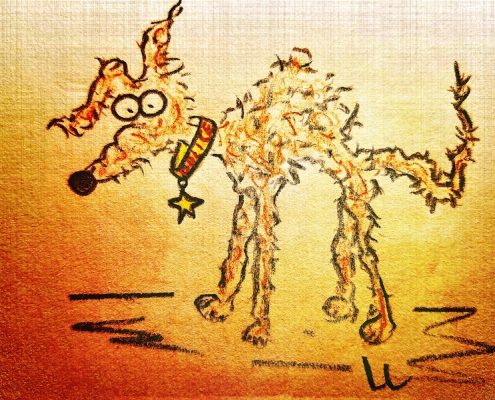A dog’s nose is its superpower. In fact, it’s so powerful that a dog could, if it desired to do so, detect a single spoonful of sugar in a million gallons of water (two Olympic-size pools).
As a former K-9 handler, tales (pun intended) of amazing sniffers fascinate me. For example, the dog who detected 35 pounds of marijuana wrapped in watertight material and submerged in a car’s gas tank that was filled to the brim with gasoline. Another dog, a cancer-sniffing dog insisted that a spot on a patient’s skin was melanoma, a place that doctors had pronounced as cancer-free. Finally, after more testing, a biopsy confirmed melanoma in a small fraction of the cells. This SuperDog, of course, dropped the mic and left the building.

So, in the field, how do dogs use that extraordinary group of sensors to zero-in on their targets (narcotics for drug-detection dogs, explosive for bomb dogs, etc.).
This is where Scent Cones come into play. Before we dive in completely, first remember that the best conditions for a dog to search (outdoors) is when the temperatures are cool, but rising slightly, a bit of humidity, and little or no wind. Wind is not a friend, but doesn’t stop the dogs from getting the job done. It does, however, alter the direction of the scent cone.
A scent cone is simply an imaginary cone-shaped area that begins at the source of the odor/scent (a body, drugs, a firearm, explosives, etc.).

The handler ideally starts the dog in a position that’s downwind from the area to be searched. If the area is hilly and the temperatures are hot, the dog should start in an elevated position since the air (scents) will be rising.

Once in position, the dog heads toward the scent, criss-crossing its way back and forth through the scent cone. I know, clear as mud, right? Let me see if I can find that sketch … Okay, I have it and I’ve taped below to help you better understand how this works.

Okay, the dog starts its search at the wide end of the scent cone (to the right in the image). –>
The cone represents the space the scent travels along the breeze/air. It’s strongest in the center, but gradually fades the further you move away from the middle of the cone.
Therefore, when we see the dogs running back back and forth, what they’re actually doing is running until they no longer smell their target. When that happens they make a U-turn and run in the opposite direction until they no longer smell it in that direction. Then they once again turn and go in the opposite direction until they scent is no longer detected. They continue this pattern all while moving closer and closer to the scent. As they move toward the scent as it grows stronger and as a result the cone becomes smaller.
Finally, they reach their target and the handler gives them their toy as a reward for doing a fantastic job. The toy, after all, is what they’re after. Not a dead body or a package of cocaine. Finding the target of their search is merely the means they use to get to their beloved toy and a bit of fun time with their handler. Believe me, these dogs are full of energy and they love to run and play and jump and … well, they love being dogs, and that’s part of what keeps them in such great shape, physically.
Remember, scent cones move with the breezes, heat, cool, etc. Dogs know where to go and what to do. If mistakes are made, they’re made by handlers who think they know more than their dogs. We don’t. As my instructor at the Virginia State Police Academy used to tell us, “The dogs are on the smart end of the leashes, not you. Stop trying to think and trust your dogs!” Then we’d run a zillion miles. It was his gentle method of helping those words sink in.
See, Lieutenant, it worked. I still remember!



